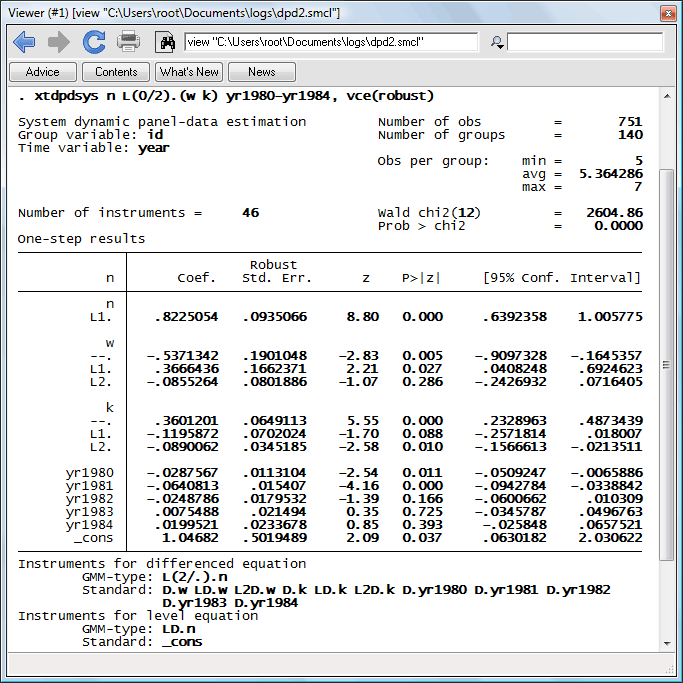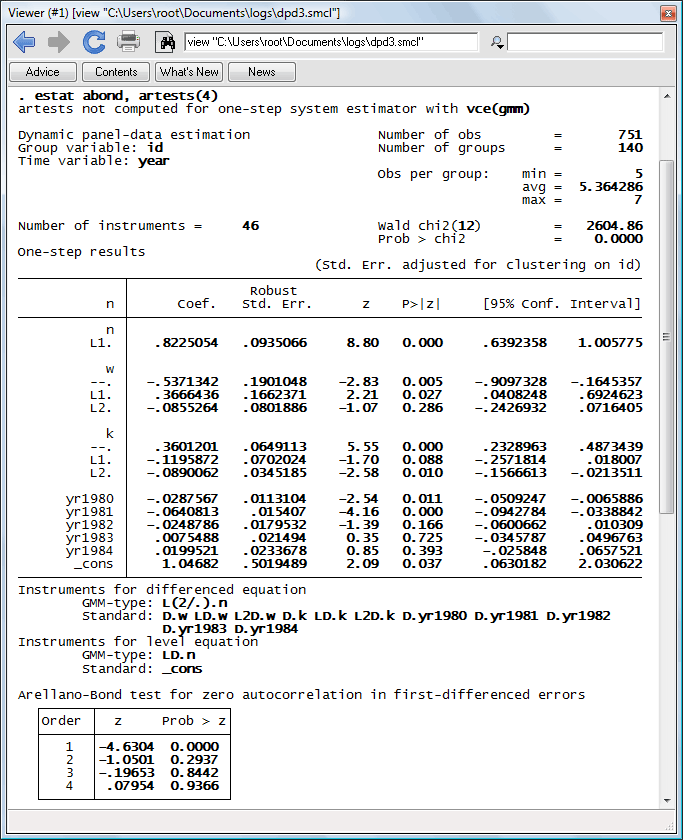

Stata has a suite of commands for dynamic panel-data analysis:
Building on the work of Layard and Nickell (1986), Arellano and Bond (1991) fit a dynamic model of labor demand to an unbalanced panel of firms located in the United Kingdom. First we model employment on wages, capital stock, industry output, year dummies, and a time trend, including one lag of employment and two lags of wages and capital stock. We will use the one-step Arellano–Bond estimator and request their robust VCE:
. use http://www.stata-press.com/data/r11/abdata
. xtabond n L(0/2).(w k) yr1980-yr1984 year, vce(robust)

Because we included one lag of n in our regression model, xtabond used lags 2 and back as instruments. Differences of the exogenous variables also serve as instruments.
Here we refit our model, using the xtdpdsys command instead so that we can obtain the Arellano–Bover/Blundell–Bond estimates:
. xtdpdsys n L(0/2).(w k) yr1980-yr1984 year, vce(robust)

Comparing the footers of the two commands’ output illustrates the key difference between the two estimators. xtdpdsys included the lagged differences of n as instruments in the level equation; xtabond did not.
The moment conditions of these GMM estimators are valid only if there is no serial correlation in the idiosyncratic errors. Because the first difference of white noise is necessarily autocorrelated, we need only concern ourselves with second and higher autocorrelation. We can use estat abond to test for autocorrelation:
. estat abond, artests(4)

Learn
Free webinars
NetCourses
Classroom and web training
Organizational training
Video tutorials
Third-party courses
Web resources
Teaching with Stata
© Copyright 1996–2025 StataCorp LLC. All rights reserved.
×
We use cookies to ensure that we give you the best experience on our website—to enhance site navigation, to analyze usage, and to assist in our marketing efforts. By continuing to use our site, you consent to the storing of cookies on your device and agree to delivery of content, including web fonts and JavaScript, from third party web services.
Cookie Settings
Last updated: 16 November 2022
StataCorp LLC (StataCorp) strives to provide our users with exceptional products and services. To do so, we must collect personal information from you. This information is necessary to conduct business with our existing and potential customers. We collect and use this information only where we may legally do so. This policy explains what personal information we collect, how we use it, and what rights you have to that information.
These cookies are essential for our website to function and do not store any personally identifiable information. These cookies cannot be disabled.
This website uses cookies to provide you with a better user experience. A cookie is a small piece of data our website stores on a site visitor's hard drive and accesses each time you visit so we can improve your access to our site, better understand how you use our site, and serve you content that may be of interest to you. For instance, we store a cookie when you log in to our shopping cart so that we can maintain your shopping cart should you not complete checkout. These cookies do not directly store your personal information, but they do support the ability to uniquely identify your internet browser and device.
Please note: Clearing your browser cookies at any time will undo preferences saved here. The option selected here will apply only to the device you are currently using.